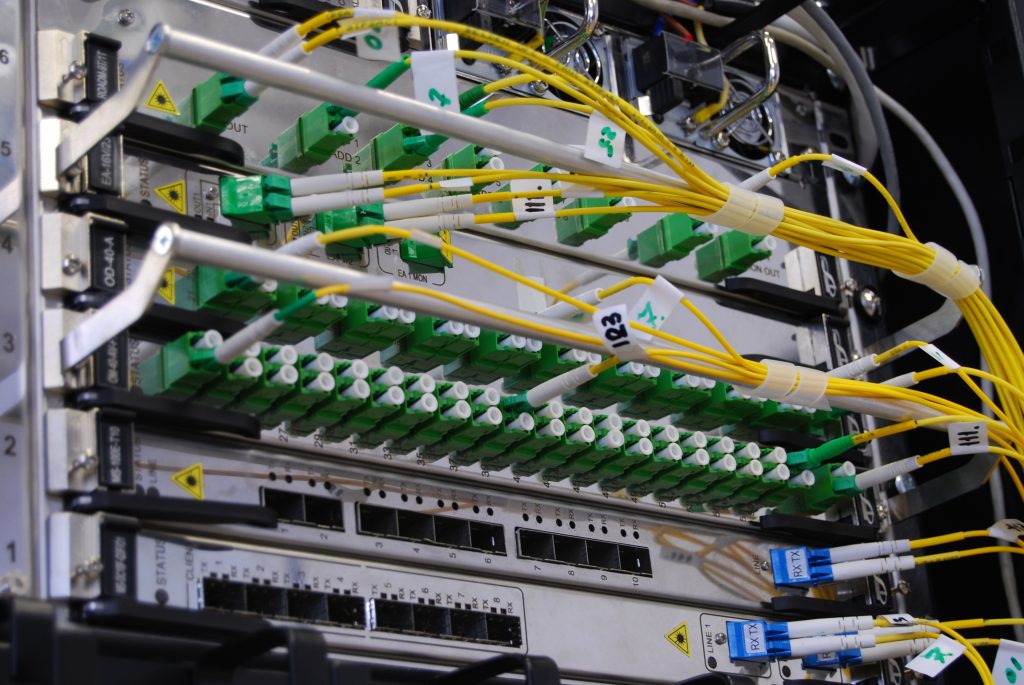Fiber optic cables have become the backbone of modern communication networks, enabling high-speed data transmission over long distances. To ensure the reliability and performance of these cables, specialized test equipment is required. In this post, we will explore the applications and differences between single-mode and multi-mode fiber test equipment- shedding light on when and why you might choose one over the other.

Single-Mode vs. Multi-Mode Fiber
Before going into all the details of the test equipment, it’s essential to understand the fundamental differences between single-mode and multi-mode fibers.
Single-mode fiber has a smaller core diameter, allowing it to support only one mode of light propagation. This makes it ideal for long-haul, high-speed applications where precision and minimal signal dispersion are crucial.
Multi-mode fiber, on the other hand, features a larger core diameter, enabling it to support multiple modes of light propagation. It is often used in short-range, cost-effective applications where precise signal characteristics are not as critical.
The choice between single-mode and multi-mode fiber test equipment depends on the specific requirements of your fiber optic infrastructure. Here’s a breakdown of the key factors to consider:
1- Precision and Cost
Single-mode fiber test equipment tends to be more expensive than multi-mode equipment due to the need for higher precision when dealing with the smaller core diameter and single mode of light propagation.
2- Applications
Single-Mode Fiber Test Equipment:
• Installation and Commissioning: Ensures newly installed single-mode fiber cables meet specifications, including testing for insertion loss, reflectance, and continuity.
• Maintenance and Troubleshooting: Identifies and troubleshoots problems in existing single-mode fiber cables, such as breaks, bends, and impairments.
• Performance Monitoring: Monitors long-term performance, aiding in the early detection of potential issues.
Multi-Mode Fiber Test Equipment:
Similar applications to single-mode equipment, but typically used for short-range and cost-effective installations.

Single-Mode and Multi-Mode Fiber in Test Equipment
Some of the most commonly used test equipment products that work for both single-mode and multi-mode fibers include:
Optical Power Meters: Power meters such as the Newport 1936-R, measure the optical power level within a fiber optic cable. The 1936-R is a versatile optical power meter that can be used It can be used with a variety of different optical sensors, depending on the specific application. It measures optical power in single-mode, and can measure in multi-mode with the use of a multi-mode fiber adapter.
Optical Time Domain Reflectometers (OTDR): There are a variety of optical time domain reflectometers (OTDRs) manufactured by Newport for both single-mode and multi-mode fibers. OTDRs are used to measure the length, attenuation, and reflectance of optical fibers. They can also be used to identify faults in optical fibers, such as breaks, bends, and splices.
Optical Spectrum Analyzers (OSA): Newport manufactures a variety of optical spectrum analyzers that measure the spectral characteristics of optical signals. They can be used to measure the wavelength, power, and bandwidth of optical signals. Additionally, OSAs can also be used to identify and characterize optical components such as lasers, filters, and amplifiers.
Single-mode and multi-mode fiber test equipment are essential tools for those involved in the installation, maintenance, and troubleshooting of fiber optic cables. Your choice between the two depends on the type of fiber optic cable you’re working with and the specific applications you need to address. By selecting the right equipment, you can ensure that your fiber optic infrastructure performs reliably and meets the required specifications, whether it’s for high-speed long-haul communications or shorter-range, cost-effective solutions.